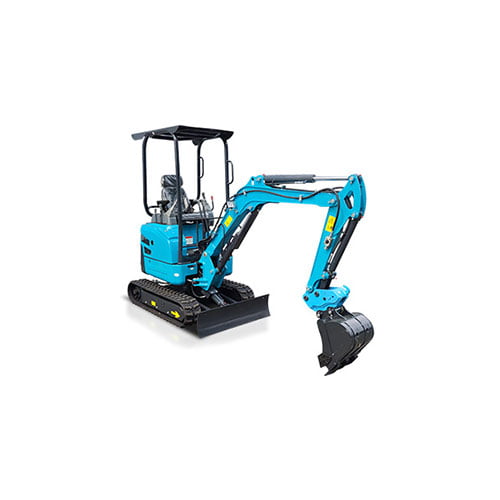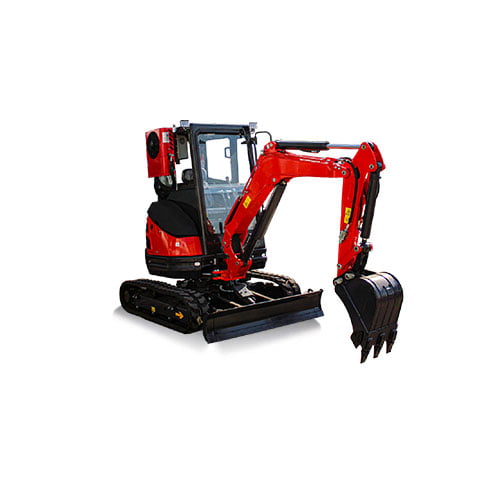Introduction

Excavating machinery has become a cornerstone of modern construction, fundamentally altering how projects are executed. With rapid advancements in technology, the construction industry is witnessing significant shifts in efficiency, safety, and productivity. As projects grow larger and more complex, the importance of excavating machinery becomes increasingly pronounced. This blog will explore the transformative impact of excavating machinery on the construction industry, detailing its benefits, types, technological advancements, economic effects, and future trends.
The Importance of Excavating Machinery in Construction
Excavating machinery plays a crucial role in construction by enabling the movement of earth, rocks, and other materials essential for various tasks. The efficiency brought about by these machines has led to significant improvements in project timelines and safety standards. Here are some key reasons why excavating machinery is vital:
- Efficiency: Traditional manual labor methods can be time-consuming and labor-intensive. Excavators and other machinery drastically reduce the time needed for tasks such as digging and grading, allowing projects to stay on schedule and reducing labor costs.
- Precision: Advanced excavating machinery offers a level of precision that manual labor simply cannot achieve. This is particularly important in complex construction projects, where accuracy in excavation can influence the overall integrity of the structure.
- Safety: The introduction of heavy machinery in construction sites significantly reduces the risk of injury associated with manual labor. Modern excavating machinery often incorporates safety features that protect both operators and nearby workers, making the construction environment safer overall.
Types of Excavating Machinery
Understanding the different types of excavating machinery is essential for appreciating their impact on construction. Each type serves unique functions, contributing to various stages of a project. Below is a table summarizing the primary types of excavating machinery and their uses:
| Type of Machinery | Description | Common Uses |
|---|---|---|
| Excavators | Large machines with a bucket and arm | Digging, grading, lifting materials |
| Bulldozers | Powerful tracked vehicles with a blade | Pushing earth, clearing land |
| Backhoe Loaders | Versatile machines with a bucket and hoe | Excavating, loading, and hauling |
| Skid Steer Loaders | Compact machines for tight spaces | Grading, digging, site cleanup |
| Dump Trucks | Vehicles designed to transport materials | Hauling dirt, rocks, and debris |
| Trenchers | Specialized for digging trenches | Installing utilities, foundations |
| Graders | Machines with a long blade for leveling | Grading surfaces for roads and sites |
Excavators
Excavators are among the most widely used pieces of excavator. They come equipped with a large bucket attached to a hydraulic arm, allowing for deep digging and precise material handling. Excavators can perform a variety of tasks, including trenching, grading, and lifting heavy materials, making them essential for both residential and commercial projects.
Bulldozers
Bulldozers are characterized by their robust design and powerful blades, which can push large volumes of earth and debris. Their primary role is to clear land and prepare sites for construction. With their superior traction and power, bulldozers excel in rugged terrain, making them indispensable in large-scale projects such as road construction and site preparation.
Backhoe Loaders
Backhoe loaders combine the functionality of a front loader and an excavator, making them incredibly versatile. They can be used for digging, lifting, and loading materials, which makes them suitable for various tasks in construction, landscaping, and small-scale excavation projects.
Skid Steer Loaders
Skid steer loaders are compact machines that can operate in confined spaces where larger machinery cannot fit. Their agility and versatility make them ideal for grading, digging, and cleaning up construction sites. Equipped with various attachments, they can be adapted to perform numerous functions, from excavation to material handling.
Advancements in Excavating Machinery
The construction industry has witnessed significant advancements in excavating machinery over the past few decades. These innovations are designed to increase efficiency, reduce emissions, and enhance operator safety. Here are some notable advancements:
Automation and Robotics
Modern excavators are increasingly incorporating automation features, allowing for greater efficiency and safety. With GPS technology and automated controls, excavators can perform tasks with minimal human intervention. This not only speeds up the excavation process but also reduces the likelihood of human error, leading to higher accuracy and better overall project outcomes.
Fuel Efficiency and Sustainability
Manufacturers are focusing on producing excavating machinery that consumes less fuel and produces fewer emissions. This shift towards eco-friendliness not only benefits the environment but also significantly reduces operational costs for construction companies. By investing in fuel-efficient machines, companies can decrease their carbon footprint while simultaneously saving money on fuel expenses.
Enhanced Safety Features
New excavating machinery comes equipped with advanced safety features such as rollover protection systems, better visibility, and collision avoidance systems to protect operators and site workers. These safety enhancements are crucial in reducing accidents on construction sites, thereby fostering a safer working environment for all personnel involved.
Improved Hydraulics
Advancements in hydraulic systems have resulted in more powerful and efficient excavator. These systems enable smoother operations and increased lifting capabilities, allowing operators to tackle larger and more challenging projects with ease. The improved hydraulics contribute to the overall efficiency and longevity of the machinery.
The Economic Impact of Excavating Machinery
Excavating machinery significantly impacts the construction economy by streamlining operations and reducing labor costs. Here’s how:
Job Creation
While excavator reduces the need for manual labor in certain tasks, it also creates jobs in machinery operation, maintenance, and support services. The growth in technology has led to a demand for skilled operators who can efficiently handle these advanced machines. This creates a more diverse job market within the construction industry, promoting workforce development and training programs.
Case Studies: Excavating Machinery in Action
Examining real-world applications of excavating machinery provides insight into its transformative impact on construction. Here are a couple of case studies that illustrate this impact:
Case Study 1: Urban Development Project
In a recent urban development project, the use of excavators and bulldozers expedited the grading and foundation laying process. The project, which initially estimated a six-month timeline, was completed in just four months due to the efficiency of modern excavating machinery. The rapid completion not only saved the company money but also allowed the development to open ahead of schedule, boosting profits and enhancing client satisfaction.
Case Study 2: Infrastructure Upgrade
An infrastructure upgrade project utilized trenchers and backhoe loaders to install new utilities for a city. The project faced significant delays when traditional methods were employed. However, once excavator was deployed, the team completed the task 30% faster than anticipated, reducing disruption to the community and saving costs associated with prolonged labor.
The Future of Excavating Machinery
The future of excavating machinery is bright, with ongoing innovations and trends shaping its evolution. Here are some predictions for the future:
Increased Use of AI
Artificial intelligence will play a larger role in optimizing excavating machinery operations. With the ability to analyze data and predict equipment needs, AI can streamline workflows and reduce downtime, ultimately improving productivity and efficiency on job sites.
Greater Emphasis on Eco-friendliness
As environmental concerns rise, the industry will continue to focus on producing more eco-friendly excavating machinery. This includes the development of electric and hybrid models that not only reduce emissions but also provide cost savings in fuel and maintenance.
Enhanced Connectivity
The integration of IoT (Internet of Things) will allow for real-time monitoring and improved efficiency in machinery operations. By connecting excavating machinery to a network, operators can gain insights into performance metrics and maintenance needs, leading to better decision-making and optimized operations.
Challenges in Adopting Excavating Machinery

Despite its advantages, the adoption of excavating machinery is not without challenges. Here are some common obstacles construction companies face:
High Initial Investment
The cost of purchasing and maintaining excavating machinery can be significant, posing a barrier for smaller companies. The initial capital investment required can be daunting, leading some businesses to rely on outdated or less efficient equipment, which ultimately affects their competitiveness.
Skill Gap
There is often a gap in skills among workers, requiring companies to invest in training for effective machinery operation. With the rapid advancement of technology, keeping staff trained on the latest equipment is essential, which can lead to additional costs and time commitments.
Maintenance and Downtime
Regular maintenance is essential to keep excavating machinery in top condition, but downtime during maintenance can disrupt project timelines. Companies must find a balance between maintaining their equipment and ensuring they meet project deadlines, which can be challenging in high-stakes environments.
Conclusion
Excavating machinery is undeniably revolutionizing the construction industry by enhancing efficiency, safety, and productivity. With the ongoing advancements in technology, the future promises even more innovations that will further transform how construction projects are executed. Embracing these changes will be vital for companies looking to stay competitive in this rapidly evolving field, and understanding the potential benefits and challenges will empower businesses to make informed decisions about their operations.
FAQ
Q:What is excavating machinery?
A:Excavating machinery refers to a range of equipment used to move earth and materials, essential for construction projects. This includes machines like excavators, bulldozers, backhoes, and more.
Q:How does excavating machinery improve construction efficiency?
A:By automating tasks and reducing labor time, excavating machinery can complete projects faster and more accurately. This efficiency leads to shorter project timelines and reduced overall costs.
Q:What are the most common types of excavating machinery?
A:Common types include excavators, bulldozers, backhoe loaders, and dump trucks. Each type serves specific functions tailored to different aspects of construction work.
Q:What are the future trends in excavating machinery?
A:Future trends include increased automation, eco-friendly designs, and enhanced connectivity through IoT technology. These advancements will further streamline operations and improve project outcomes.
Q:How does excavating machinery impact job creation?
A:While it reduces the need for manual labor, it also creates jobs in operation, maintenance, and support. This shift promotes workforce development and enhances the diversity of the job market.
Q:What are the challenges in adopting excavating machinery?
A:Challenges include high initial costs, skill gaps among workers, and the need for regular maintenance. Addressing these challenges is crucial for companies looking to fully leverage the benefits of excavating machinery.
Q:Why is safety important in excavating machinery?
A:Safety features are crucial in protecting operators and workers on-site. Modern machinery is designed to minimize risks and prevent accidents, fostering a safer working environment for all personnel involved.




